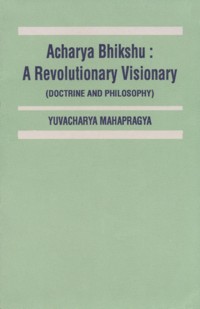The topic of ends and means has been much discussed in this century. In politics there came into being two opposite camps: Marxism and Gandhism.
Marx said: "Ends justify means. If you can use good means, well and good, but you are not to worry about bad means to achieve your ends - so much so that even violence can be used."
Mahatma Gandhi insisted on good means. He said: "Independence of India is my goal, but on condition that I get it through non-violence. Otherwise I wouldn't mind living under foreign rule". Commenting on Marx's principle he said:
You maintain that there is no relationship between ends and means. You are greatly mistaken. Under this misconception people who call themselves religious have been guilty of sinful actions. This amounts to sowing seeds of dhatura - the thorn apple (a poisonous plant) - and expecting to reap a plant bearing fragrant flowers. I can cross the sea by ship. But if I think of sailing in a bullock-cart, the cart as well as I will be drowned. 'Your devotion should be according to the god you worship'. This saying is worth reflecting upon. People have misinterpreted it and so they have been led astray. A means is aseed and an end is a tree. Therefore the seed and the tree are related in the same way as the means and the end. By worshipping the devil I cannot gain the reward of devotion to God. [2]
The debate about 'ends and means' is an old one. Acharya Bhikshu had pondered upon it a great deal. During his time different conceptions of religion were prevalent: Man is sovereign. He should be protected at any cost. It is not sinful even if we have to kill other animals in our attempt to save man.
When such is the thinking of the people, there cannot be any scope for us to consider the issue of good means. It is surprising that even among the Jain sects known for minute analysis of nonviolence the view that it is not sinful to do violence to save man got deep-rooted. Acharya Bhikshu reflected on it. He felt that this conception was not right. Violence is after all violence, be it for saving human life or for any other purpose.
Acharya Bhikshu propounded the principle of good means to counteract this conception. He said:
- If the end is good, the means too should be good.
- There is no separation between ends and means.
- Both are one and the same things.
- That which is a means during the course of practice becomes indistinguishable from the end at the stage of achievement. Ends and means cannot be separated.
- Means will always be consonant with ends. That which runs counter to the end cannot become means.
For making a pot, soil is the material and the potter's wheel is the means. A spindle can be a means for spinning cotton wool, but it cannot be a means to make an earthen pot. If the means is not appropriate to the end, we will never be able to attain the end. The principle of ends and means in nonviolent behaviour can be compared to the principle of cause and effect in logic. How can the use of force or temptation be possible in the conduct of a religious activity? The contribution of force and temptation has been immense in distorting religion. The means to the religion of nonviolence is change of heart. And where there is a question of change of heart, the use of force and temptation is undesirable. Force is in consonance with state authority, and wealth agrees with economic power. But neither has any place in spiritual power.
In his concluding remarks Acharya Bhikshu said: "Where there is force, there is no religion; where there is temptation, there is no religion. The means to religion is change of heart. You cannot reap mangoes by watering the poisonous thorn apple plant."
Great religious heads and religious authorities have laid down the principle that Christian princes and missionaries should not take resort to force or violence in their attempt to convert people to Christianity.
Acharya Bhikshu argues: "If use of force leads to religious conduct, Chakravarti Bharat, who was very powerful, would have got an announcement made in his empire that no one would kill any other person. But he did not do it. If you can make a person religious by using force, why did Kal Sokarik not become nonviolent? Shrenik, the king of Magadh, got him dumped into a dry well and he went on making buffaloes of soil and dirt and killing them."
Someone asked Acharya Bhikshu: "There is a child killing ants with a stone. He cannot distinguish between violence and nonviolence. A person comes and tells him not to kill ants, but it has no effect on the child. Then he snatches the stone from the child's hand. What did it achieve?"
Acharya Bhikshu said: "Nothing. At first the stone was in the child's hand and then it came to be in the possession of the man. It would have been a religious activity only if the child's heart had undergone transformation and as a result of it he had given up violence."
At one time it became a practice with some Jains to go to a butcher, pay him five to ten rupees and get the goats released. They would feel that they had done a great deed in the cause of nonviolence. When this practice reached its extreme it became the cause of the transformation of the principle of nonviolence. Acharya Bhikshu explained it and said: "Temptation is not a means to nonviolence. Are you releasing the goats by giving money or are you encouraging the butcher to kill more goats, he asked?"
The use of force and temptation corrupted the pure form of nonviolence and made it appear hideous. Nonviolent behaviour is arduous. You cannot acquire it without practising sacrifice, austerities, compassion and sense-control. Therefore easy paths were invented. One person would say to another: You undergo fast and when you complete I will be there to help you break your fast with delicious dishes. These paths never appealed to Acharya Bhikshu. What happened was people lost their hold on religion because of temptation.
The main premise of Acharya Bhikshu's religious revolution was purification of means. If he had not explained the principle of the purification of means, we would not have had an occasion to understand the meaning of right religion. It cannot force a man to be nonviolent, because the use of force is not the right means to nonviolence. We cannot tempt a man towards nonviolence by offering him riches because temptation is not the right means to nonviolence.
To express his rejection of force Upadhyay Vinay Vrjayji wrote: "The Tirthankaras had infinite power. Did they force anyone to be religious? They just gave right discourses on religion. Those who followed them turned religious."
"If Tirthankar Mahavira had used force, his son-in-law, Jamali, would not have gone astray; he would not have propagated false beliefs. The use of force may be acceptable in politics. But even there the best government is that where there is least use of force."
Some religious teachers came to believe that there is no sin in killing beings having only one sense to nurture man* in fact they considered it as having the sanction of religion. Acharya Bhikshu refuted this belief. Hospitality is a social obligation. To relate it to religion is to lower the status of religion. What is religious in killing one being in order to bring up another? One life is the life of another life is a natural canon; it cannot be made a religious canon. Religion says: Don't kill any being. If we start identifying conventional religion or social duty with religion, religion of the self or religion for salvation, then we are changing the definition of religion altogether. Religion lies in the sanctity of soul, moderating passions and abating violence.
Some scholars have taken violence to be religion if used in order to defend religion. Acharya Bhikshu refuted it. He said religion is nonviolence. It cannot be defended by violence. In this context Mahatma Gandhi's view is worth mentioning: "Defending a creed through violence, is not defending religion. Religion is an individual's achievement. It is for him to keep it and for him to lose it. Defending the community is not so much a matter of religion as of sect.[3]
 Yuvacharya Mahaprajna
Yuvacharya Mahaprajna
